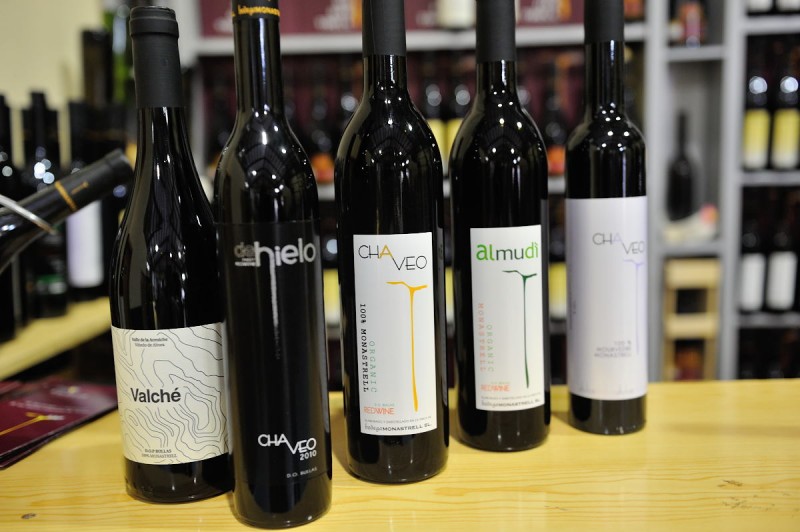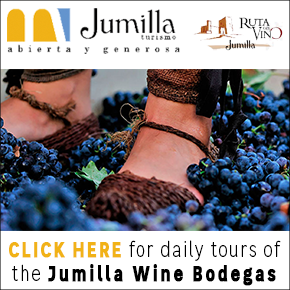- Region
- Águilas
- Alhama de Murcia
- Jumilla
- Lorca
- Los Alcázares
- Mazarrón
- San Javier
-
ALL AREAS & TOWNS
- AREAS
- SOUTH WEST
- MAR MENOR
- MURCIA CITY & CENTRAL
- NORTH & NORTH WEST
- TOWNS
- Abanilla
- Abarán
- Aguilas
- Alamillo
- Alcantarilla
- Aledo
- Alhama de Murcia
- Archena
- Balsicas
- Blanca
- Bolnuevo
- Bullas
- Cañadas del Romero
- Cabo de Palos
- Calasparra
- Camping Bolnuevo
- Campo De Ricote
- Camposol
- Canada De La Lena
- Caravaca de la Cruz
- Cartagena
- Cehegin
- Ceuti
- Cieza
- Condado de Alhama
- Corvera
- Costa Cálida
- Cuevas De Almanzora
- Cuevas de Reyllo
- El Carmoli
- El Mojon
- El Molino (Puerto Lumbreras)
- El Pareton / Cantareros
- El Raso
- El Valle Golf Resort
- Fortuna
- Fuente Alamo
- Hacienda del Alamo Golf Resort
- Hacienda Riquelme Golf Resort
- Isla Plana
- Islas Menores & Mar de Cristal
- Jumilla
- La Azohia
- La Charca
- La Manga Club
- La Manga del Mar Menor
- La Pinilla
- La Puebla
- La Torre
- La Torre Golf Resort
- La Unión
- Las Palas
- Las Ramblas
- Las Ramblas Golf
- Las Torres de Cotillas
- Leiva
- Librilla
- Lo Pagan
- Lo Santiago
- Lorca
- Lorquí
- Los Alcázares
- Los Balcones
- Los Belones
- Los Canovas
- Los Nietos
- Los Perez (Tallante)
- Los Urrutias
- Los Ventorrillos
- Mar De Cristal
- Mar Menor
- Mar Menor Golf Resort
- Mazarrón
- Mazarrón Country Club
- Molina de Segura
- Moratalla
- Mula
- Murcia City
- Murcia Property
- Pareton
- Peraleja Golf Resort
- Perin
- Pilar de la Horadada
- Pinar de Campoverde
- Pinoso
- Playa Honda
- Playa Honda / Playa Paraíso
- Pliego
- Portmán
- Pozo Estrecho
- Puerto de Mazarrón
- Puerto Lumbreras
- Puntas De Calnegre
- Region of Murcia
- Ricote
- Roda
- Roldan
- Roldan and Lo Ferro
- San Javier
- San Pedro del Pinatar
- Santiago de la Ribera
- Sierra Espuña
- Sucina
- Tallante
- Terrazas de la Torre Golf Resort
- Torre Pacheco
- Totana
- What's On Weekly Bulletin
- Yecla


- EDITIONS:
 Spanish News Today
Spanish News Today
 Alicante Today
Alicante Today
 Andalucia Today
Andalucia Today
Bullas wine route: Bodega Monastrell
Bullas Ruta del Vino: the Monastrell winery specializes in organic and vegan wine production
In the highly competitive world of wine production the small winery of Bodega Monastrell in Bullas has carved out a niche for itself in the field of organic and even vegan wines, having developed a range of products derived from the grapes grown at its picturesque vineyards in the Aceniche valley.
The company was formed by Alfonso and Mavi, a couple who are both natives of Bullas who inherited long family traditions in agriculture. This fuelled their passion for wine, and in 2005 they collected their first grape harvest as they worked towards their aim of producing high quality wines in an entirely environmentally friendly way. All of their wines are based on the Monastrell variety of grape after which the company is named, using vines which can live for over 100 years and whose roots grow to a depth of up to 20 metres, allowing them to make the most of the moisture in the soil even in periods of drought.
Their commitment to ecologically sustainable projects has been firm right from the start, and since 2011 the products of Bodega Monastrell have been certified by the Ecological Agriculture Council.
The vineyard is also certified for its low carbon footprint and some of the wines are certified as vegan.
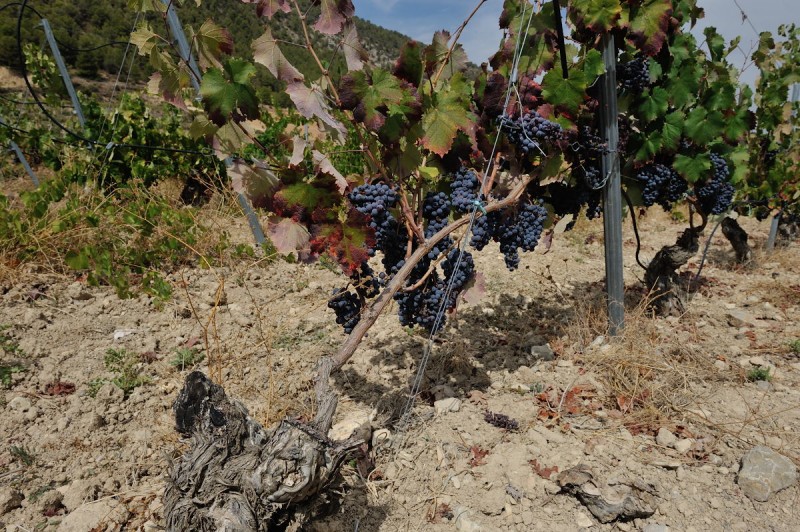
The vineyards of Bodega Monastrell
Monastrell is the dominant grape variety in Bullas, and in fact this area is one of the most important for the strain in the world. 40% of Monastrell vineyards worldwide are in the Region of Murcia, and the area of around 5,000 hectares where they are cultivated in the Bullas D.O accounts for over 4% of all Monastrell vineyards on the planet.
This is because the Monastrell is perfectly adapted to the soil and climate of the north-west of Murcia and in the Valle del Aceniche specific temperature and water conditions exist which support the growth of the Monastrell variety. There are between 3,200 and 3,500 hours of sun here a year, around 350-450mm of rainfall per year and the altitude of 850-900 metres permits a temperature variation of up to 25ºC, supporting the maduration process.
The vines of Bodega Monastrell grow on 20 hectares of land, and as the name of the winery implies, the vast majority of grapes grown here (90%) are of the Monastrell variety, but there are also small areas devoted to Petit Verdot (8%) and Tempranillo (2%).
Approximately 2,000 30-year-old Monastrell vines are grown per hectare, while for Petit Verdot the density rises to 3,000/hectare. Pest control is by means of pheromones, and fungi are eliminated by natural means including careful pruning and de-leafing.
At Bodega Monastrell the search for new ways to improve wine production and create new concepts is constant, and this extends even to the way in which the vines are cared for in the Aceniche valley.
The accepted wisdom in the area of Bullas is that Monastrell vines should be pruned back to ground level every year with most stock adopting the copa form, thus concentrating the energy of the plant on its grapes rather than on consolidating upward growth, but at Bodega Monastrell a different technique is being employed on some parcels. This consists of allowing the vines to climb up wire trellises and pruning them in such a way that less energy is expended on growing leaves and more can be devoted to the grapes themselves. This is one of the key distinguishing factors in the products of the winery.
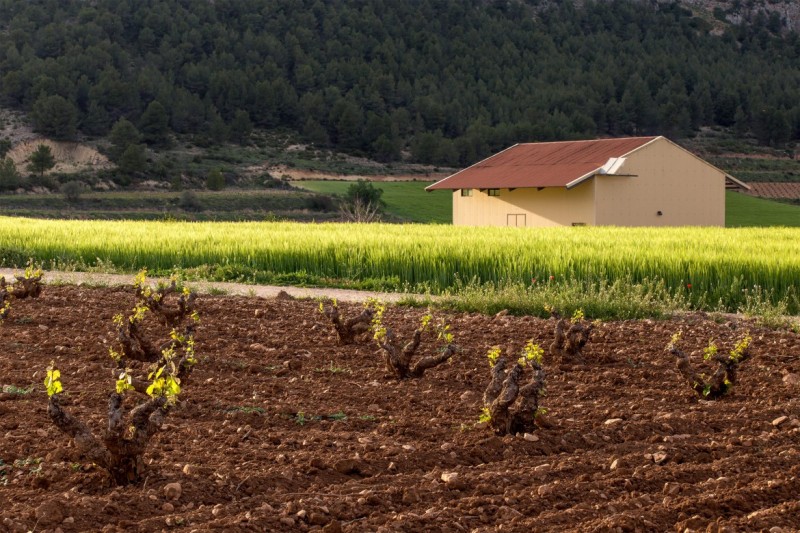
Commitment to ecologically sustainable production
The whole ethic of Bodega Monastrell is one which places supreme importance on leaving a minimal carbon footprint, with environmental concerns influencing every stage of viniculture and viticulture. This can be seen, for example, at the modest premises occupied by the winery in the Aceniche valley, which was designed in order to make the maximum possible use of solar power.
Such is the importance of environmental concerns at the winery that not only are vegan wines produced, but even the weight of the glass bottles in which the wine is sold is closely monitored in order to achieve the best possible combination of quality storage and the use of natural resources.
Similarly, great care is taken over the way in which the grapes are transported to the winery from the vineyards, always with an eye on both quality and environmental sustainability, and also on how the finished products are distributed to retail outlets and customers.
All grapes are hand picked, transported in small boxes, and refrigerated before being hand sorted and stemmed.
These environmentally friendly measures are also reflected in the labels used by the winery, which all feature the same motif showing a vine growing from the earth, as well as the environmentally friendly packaging..
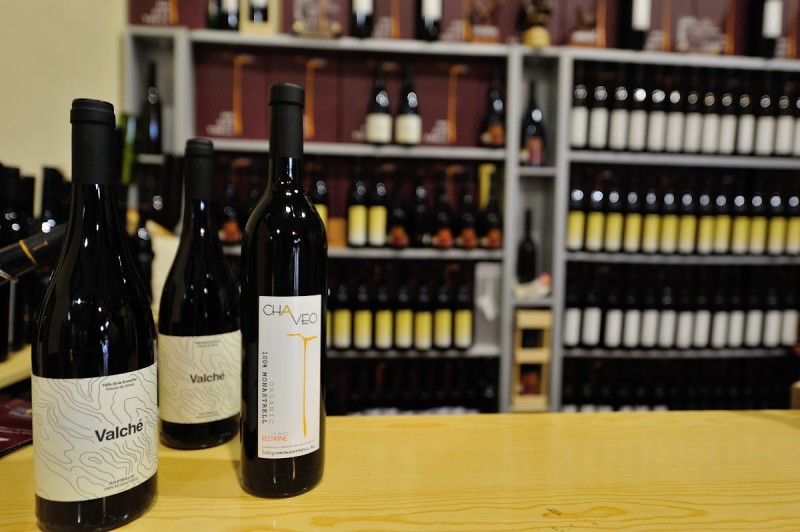
The wines of Bodega Monastrell
All of the five labels produced at Bodega Monastrell are red Crianza wines, but each has its own distinctive characteristics due to variations in the production techniques over a period of between 6 and 24 months.
Chaveo
Chaveo is the flagship product of the Bodega, and annual production of this 100% Monastrell wine is usually around 12,000 bottles. The grapes used come from vines which are slightly younger than those in the Valché label, and the product is stored in French oak barrels before bottling.
The result is a lively red wine, reflecting the early picking of the grapes, with an aroma which includes hints of berries and herbs as well as toffee and mint. The flavour is described as subtle and elegant but at the same time powerful. Chaveo 2010 data sheet
Almudí
This is a blended wine containing 90% Monastrell grapes, 5% Tempranillo and 5% Petit Verdot, and has been officially certified as an environmentally friendly product.
The wine matures for 7 months in semi-new Frenach oak barrels before bottling, and is of a deep red colour.
The resulting aroma is a complex one due to the blending process, and the taste is described as featuring nuances of berries, mint and even pepper.Click for technical notes Almudí 2011
Valché
Production of Valché is typically limited to around 4,000 bottles per year. It uses only Monastrell grapes which come from vines which are over 30 years old, and the wine is stored in new French oak barrels.
The result is a deep red wine which continues to mature for up to ten years, and an aroma with hints of vanilla, cocoa, mint and toffee. Expert tasters will also be able to detect nuances of ripe fruit. Click for technical notes Valché
Sweet Chaveo
Production of this 100% Monastrell dessert wine is limited to around 1,000 half-bottles per year, and only very ripe grapes from mature vines are used. The grapes are picked relatively late, typically around the end of October, and a residue of natural sugars is allowed to remain in the wine.
The deep red wine is full of sweet aromas, and despite its sweetness it is described as refreshing and especially appropriate to accompany chocolate desserts.
Click for technical data Chaveo 2010
DeHielo Chaveo
This is the ice wine of Bodega Monastrell, and again only grapes of the Monastrell variety are used in its production (around 1,000 bottles per year).
However, this is an unusual wine as grapes are picked well after ripening in December, after the first frosts, and are transported to the winery frozen before the maturing process takes place in French oak barrels. The result is a brownish-red wine of great intensity, with a complex aroma and flavour.
The phrase “ice wine” implies the use of a technique which is normally associated with vineyards in Germany, but has been imitated to a greater or lesser degree in many other European countries.
The making of ice wine requires a considerable act of daring, in that the grapes are left on the vine to mature well past their normal picking time until the first frosts of the winter. At Bodega Monastrell they are picked after three nights of frost, typically in the month of December, and are then transported, still frozen, to the winery. Here they are not crushed, as in normal wine production, but are left to thaw and drip their juices, the end result being a very concentrated and sweet flavor in the end product.
The Aceniche valley lies at an altitude of around 800 metres above sea level, and the grapes used for the “DeHielo” ice wine are grown on the highest part of the land owned by Bodega Monastrell.
Click for technical data deHielo 2010
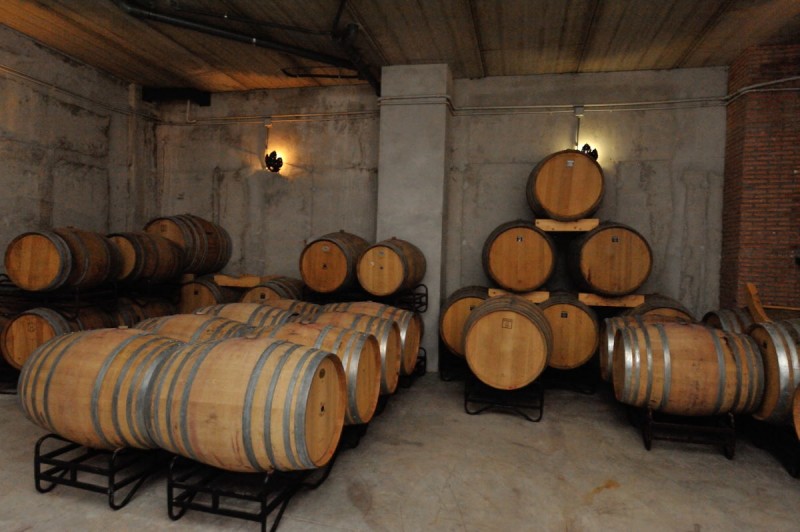
Guided tours of Bodega Monastrell
Tours of the vineyard and winery of Bodega Monastrell are available on Thursdays (10.00 to 14.00 and 16.00 to 19.00) and Saturdays (9.00 to 14.00).
The cost is 4€ per head for a minimum group size of 6 people (including a tasting), and advance booking is required. Tours can be reserved in English.
How to get to Bodega Monastrell
Those visiting Bodega Monastrell should do so by heading south-west out of the town of Bullas on Calle del Río. As soon as the built-up area comes to an end there is a left fork to the Salto del Usero beauty spot: ignore this and continue on the country road which is officially known as “Diseminado Sendero Fuente Mula” for approximately 8 kilometres.
Various wineries are visible and signposted along this road, but there is little else in the way of directions. At kilometre 9.7, though, a small turn-off to the right is signposted “Bodega Balcona” and “Bodega Monastrell”, and the road takes motorists into the heart of the Aceniche valley with the winery visible on the right.
The Diseminado Sendero Fuente Mula road eventually leads to the village of Avilés in the large municipality of Lorca.
It is possible to combine a visit with a trip to the Bodega Balcona, which is also located in the Aceniche area, and both can be visited, along with the Museo del Vino in the centre of Bullas, in a long morning.
Contact details
Address: Paraje del Aceniche, Carretera de Avilés km. 9, 30180 Bullas
Office: Gran Vía, 8, 1º, 30180 Bullas
Telephone: 968 653708 / 648 702412
Email: info@bodegamonastrell.com
Click for more information about the Bullas municipality including the Bullas Wine Routes


